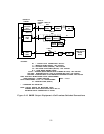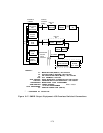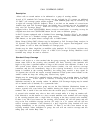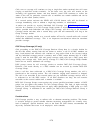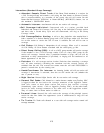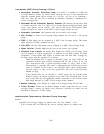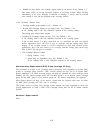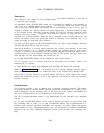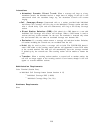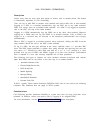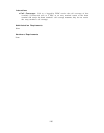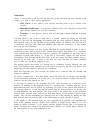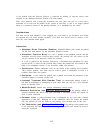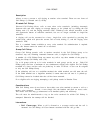CALL COVERAGE—INDIVIDUAL
Description
This feature is very similar to Call Coverage–Group.
The primary difference is that this is
a one-on-one type coverage.
An Individual Cover (COVER IND) button can be assigned on multiline voice terminals to
cover calls to a specific (single) voice terminal.
The covering station can answer covered
calls by pressing COVER-IND. Each button can be programmed to ring or not to ring. If
ringing is selected, the covering station will begin ringing after a specified number of rings
at the covered station. When the specified number of rings has occurred, multiline voice
terminals will stop ringing.
Single-line voice terminals continue to ring until the call is
answered at a covering terminal. When the call is answered at the covering station, the call
remains accessible at the call appearance button of multiline voice terminals, but is no
longer accessible at single-line voice terminals.
Covered calls will appear on the COVER-IND button; all calls except Automatic Intercom
and Directed Night Service calls are covered.
Each Cover button at a covering station represents one covered voice terminal. If more than
one voice terminal is to be covered, multiple buttons are required, one for each station
covered. A covering voice terminal may be assigned multiple COVER-IND buttons for a
particular station to cover multiple simultaneous calls to that station. The first button will
track the first call, the second button, the second call, etc.
Up to eight COVER-IND buttons can be assigned for each covered station.
For VI systems, up to 31 stations may receive Individual Call Coverage. There is no
limitation for V2 systems.
A voice terminal can receive both Individual Call Coverage and Group Call Coverage.
Refer to Messaging Services for a description of Call Coverage—Message Waiting service,
which allows the covering station to control the status of the covered user’s Message LED.
Calls from a covering station to a covered station will not be covered unless the covered
station has additional coverage.
This is an important consideration when the attendant
provides coverage.
Considerations
Call Coverage provides a way to redirect calls to alternate answering positions. The feature
is versatile enough to permit suitable alternate answering arrangements for virtually every
level of employee.
Special functions, such as the Send All Calls feature, accommodate the
day-to-day variations that occur in an employee’s work schedule.
The Call Coverage–Individual feature is not administrable on the Switched Loop Attendant
Console.
For V2 only: COVER-IND buttons can be used to provide the ability to receive more than
two
incoming calls at a time.
Up to eight COVER-IND buttons can be administered on a
multiline voice terminal, providing “individual call coverage”
for itself. When both System
Access buttons are busy, subsequent incoming calls will be directed to available COVER-IND
buttons on the set, thus simulating additional System Access buttons (for incoming calls
only).
2-82



